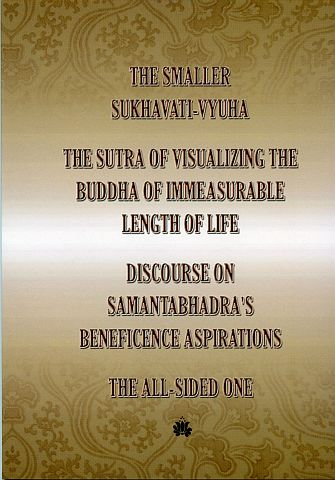

Most ebook files are in PDF format, so you can easily read them using various software such as Foxit Reader or directly on the Google Chrome browser.
Some ebook files are released by publishers in other formats such as .awz, .mobi, .epub, .fb2, etc. You may need to install specific software to read these formats on mobile/PC, such as Calibre.
Please read the tutorial at this link: https://ebookbell.com/faq
We offer FREE conversion to the popular formats you request; however, this may take some time. Therefore, right after payment, please email us, and we will try to provide the service as quickly as possible.
For some exceptional file formats or broken links (if any), please refrain from opening any disputes. Instead, email us first, and we will try to assist within a maximum of 6 hours.
EbookBell Team

4.4
22 reviewsThe Amitāyurdhyāna Sūtra (Sanskrit); English: Sutra on the Visualization of [the Buddha] Immeasurable Life) is a Mahayana sutra in Pure Land Buddhism, a branch of Mahāyāna Buddhism.
The Longer Sukhāvatīvyūha Sūtra (Sanskrit), is one of the two Indian Mahayana sutras which describe the pure land of Amitābha. Together with the Shorter Sukhāvatīvyūha Sūtra, this text is highly influential in China and Japan where it is revered by the Jōdo-shū and Jōdo Shinshū congregations. The title is often translated in English as either the Sutra [on the Buddha] of Immeasurable Life, or simply the Immeasurable Life Sutra.
Samantabhadra is also a key figure in the Āvataṃsaka-sūtra, particularly the last chapter, the Gaṇḍavyūha-sūtra. In the climax of the Gaṇḍavyūha-sūtra, the student Sudhana meets Samantabhadra Bodhisattva who confirms his awakening. Sudhana then merges into Samantabhadra, and Samantabhadra recites a set of popular verses. These verses are known as the Bhadracaripraṇidhāna (Vows of Good Conduct) or Ārya-samantabhadra-caryā-praṇidhāna-rāja (The Royal Vow to follow the Noble Course of Conduct of Samantabhadra).[2] This text which concludes the entire Avatamsaka was very popular in India, East Asia and in Himalayan Buddhism, and it is cited in numerous sources. It was considered to be a dhāraṇī and recited individually as a meritorious text.